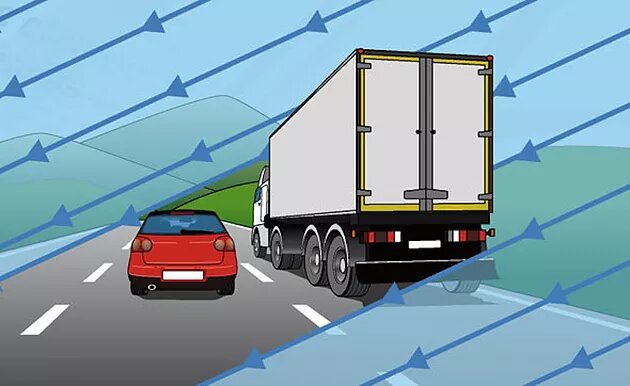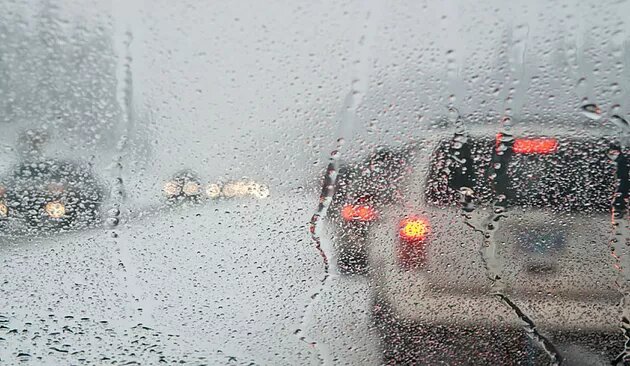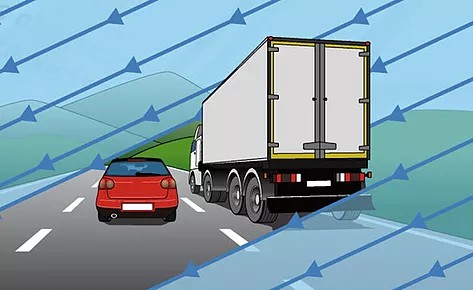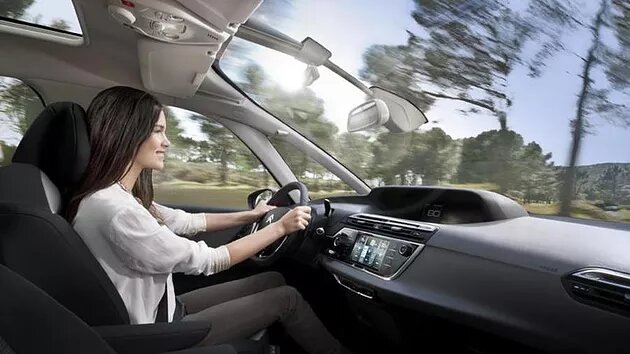Did we want winter? Here is the winter. The first storm of the year arrives in Spain, with rain, snow and wind, very windy.
The same wind that surprised some of us, and almost made us fly, when we went out into the street this morning. The same wind that will make it a bit more difficult to drive these days, especially for those happy gusts of lateral wind.
And that is why we believe that in these days it will be important to exercise extreme caution, adapt our driving to gusts of wind that will exceed 100 km / h, and avoid unnecessary frights.
Did you know that each winter there are more than 170 accidents caused by the strong gushing wind?
Did you know that thousands of injured and deceased have been registered in recent years due to accidents in which the wind was responsible?
Did you know that 4.5% of accidents related to bad weather are due to the wind?
Here are 8 tips for driving with wind. To do it with safety and comfort and avoid accidents.
4.5% of accidents related to bad weather are a consequence of the wind.
1. Adapt your speed to the weather conditions.
It’s very simple, but it does not hurt to remember it. When the weather conditions become adverse, it is essential to adapt our speed accordingly.
The great danger of speed and wind is precisely that a gust of lateral wind can cause our car to deviate from its trajectory, and at higher speed, the push of the wind will make us deviate even more from our trajectory.
It is advisable to reduce the speed slightly, especially in areas more exposed to the wind, or in situations that we will be detailing below.
From Traffic it is also advisable to use shorter gears, in order to have a higher response capacity of the engine if necessary. That is to say, to circulate to smaller speed, but with a regime of greater revolutions, which will also help us to maintain the control of our car.
2. Trees are your friends, but they can also be your enemies.
Beyond the sensations transmitted by the direction of your car, it is really useful to control the movement of the branches in the treetops.
The place to which the branches move will visually indicate to which place the wind moves. The leaves of the trees, and the dust thrown by the wind, will also help us visually check the direction of the wind.
On the roads there are also wind sleeves, designed precisely for that purpose, to indicate the direction of the wind, and give us a reference on its intensity.
The big problem with trees is that their fragility, and the intensity of the wind, can often play tricks on us. The fall of trees on the road is a real danger, so we have to be especially careful on mountain roads, which circulate through trees, and with many blind corners.
The possibility of encountering a fallen tree on the road after a grade change or a curve exists. It is also not advisable to park under trees, not only because they can be knocked down, but also because branches and fruits that damage the bodywork of our car can fall.
3. The danger of crosswind.
Sudden changes of direction in the wind are perhaps the greatest danger we will encounter on our trip.
That is why it is very important to firmly hold the steering wheel, avoid distractions, do not make sudden movements, and try to correct those changes of direction to prevent the wind from diverting our trajectory.
It is important to make very smooth and progressive movements.
If we counteract the effect of a major gust of wind with a sudden and rapid flywheel movement, if that gust of wind ceases, our loss of trajectory may be ostensible, and even cost us an accident.

4. A lot of caution with overtaking (especially trucks, vans and bulky cars).
One of the most delicate situations with wind is that of overtaking, especially large-tonnage vehicles, such as trucks and buses. Its ability to act as a barrier to the wind will cause us to encounter two situations in which we must take maximum precaution.
If the wind blows on the right side and we overtook a truck, when we pair with the vehicle, we will see how our car approaches towards this, as if absorbing us.
When overtaking the vehicle we will find that the wind blows on the right side, and we will have to correct it by preventing our car from moving to the left.
It will also hinder our reinstatement to the right lane.
If the wind blows to the left, when we overtake the vehicle we will find the opposite effect, with which our car is pushed into the right lane.
5. A lot of caution in especially dangerous areas, such as tunnels and viaducts.
The effect that we experience when overtaking a truck is multiplied by the protective screen effect exerted by the tunnels, or the mounds of the road.
We must bear in mind that when entering a tunnel the force of the wind that pushed our car will cease, and it will not be necessary to make corrections, and that when leaving the new tunnel, the wind will return, this time with an unknown direction for us, since necessarily it must not be the same, nor its intensity, that we find when entering the tunnel.
Viaducts, by their nature, are places especially exposed to the force of the wind.
The mounds that surround the road can also act as a wall to stop the wind, so we must also be very careful and contemplate the landscape that surrounds the road to prevent any unexpected movement.
6. Very careful with urban furniture and landslides.
In the city, we must avoid as much as possible parking near any element of urban furniture susceptible to being pushed by the wind. Even on the road it is important to be careful, it is not strange that a bin or container starts rolling across a street.
On the road we also have to be very cautious, because of the aforementioned trees, and because the wind tends to generate landslides.
7. Remember that the asphalt can be slippery.
Beyond the obvious tips for driving with rain or snow, phenomena that usually accompany the wind, we must bear in mind that even without precipitation, the asphalt can be more slippery than usual.
The wind tends to drag grit to the road, or to have leaves and fruit from the trees projected. This accumulation of leaves and grit can put us in serious trouble when negotiating a curve, or turn in a roundabout.

8. Be very aware of the limitations of your car.
Experience will tell you if your car is more or less prepared to combat the force of the wind.
The vehicles that generally suffer the most from lateral wind gusts are those with higher bodies, and with greater lateral surface. Beyond trucks and vans, which suffer especially, the large minivans, and SUV, for their height, are those that require greater care when dealing with the wind.
If your car becomes difficult to drive in these conditions, be even more careful and respect all the advice we offer in this article.
On the other hand it is also important to remember that, generally, the cars that by their nature accuse more the gusts of wind, like minivans and SUV, usually are more complicated to control if they lose the trajectory, by its high center of gravity.
Fuente Diariomotor



Recent Comments